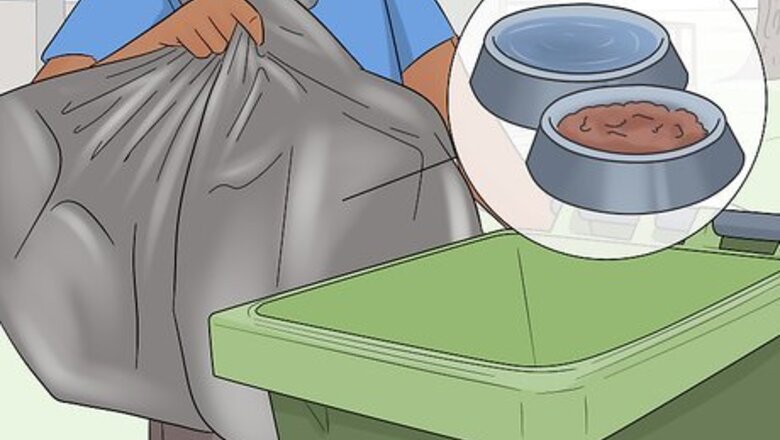
views
X
Research source
Cat Behaviour Explained. Peter Neville. Publisher: Parragon
Deterring Neighborhood Cats
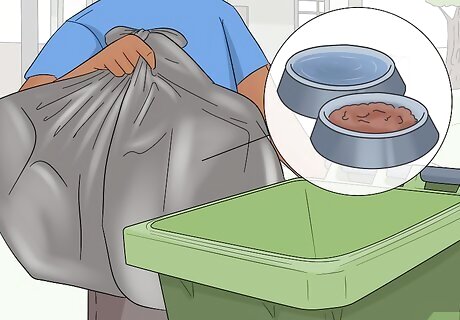
Remove resources. Remove food, water and other things that could be highly prized by visiting cats. This reduces the "value" of the porch and makes it less worth it to stake a territorial claim.
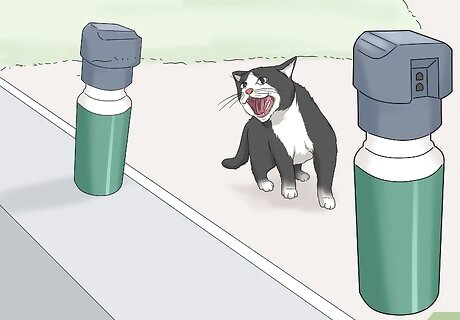
Use a motion-operated compressed air canister. An ideal deterrent is a canister of compressed air that is activated by a motion sensor. These canisters sense motion on the ground. Once triggered, they deliver a squirt of compressed air, which cats hate. If the visiting cat perceives your porch as risky or hostile, the cat will not want to visit anymore. This tactic is one that the cat won’t associate with you. If the cat thinks you're causing the hostility, this might not solve the problem. For example, if you shout at the cat each time he is around, he will learn to wait until you are not around, and then he will come to pee on your porch. He associates the punishment with you instead of the porch. Therefore, the cat will avoid you but will visit when you're not around.

Encourage your neighbors to neuter their cats. No amount of deterrents is going to bring the problem under control until the neighborhood cats are neutered. Both male and female cats often urinate on your porch to advertise that they are sexually available to other cats. Talk with your neighbors to see if they will agree to neutering their cats. You should positively identify your neighbor's cat before talking to your neighbor. Watch for the offending cat by either watching through the window or setting up a security camera. Rule out your cat by trying fluorescein dye. Fluorescein is a harmless orange dye that, when ingested, turns urine bright green, and it fluoresces when illuminated with an ultraviolet light. Get fluorescein dye from your vet and add some of the dye to your cat’s food. After a day or two, inspect the areas on your porch where there is urine. Try this at night and shine a black light on the porch. If you see something fluorescent, your cat is the likely culprit, instead of your neighbor's cat.
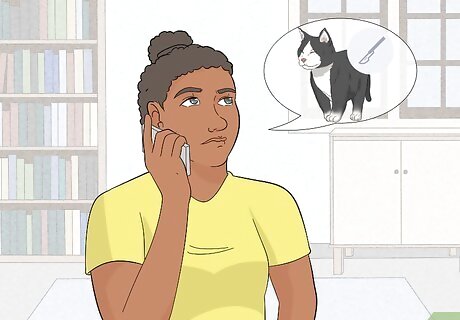
Contact an organization to have stray cats neutered. If you have a population of strays in the neighborhood, chances are they won't be neutered. There are numerous charitable organizations which are geared towards trapping and neutering stray cat populations. Search the internet for an organization near you. You can also contact your local veterinarian. Chances are the clinic undertakes neutering at a discounted rate for any nearby charities. The vet can usually give you contact details for a local charity coordinator.
Making Your Porch Less Appealing
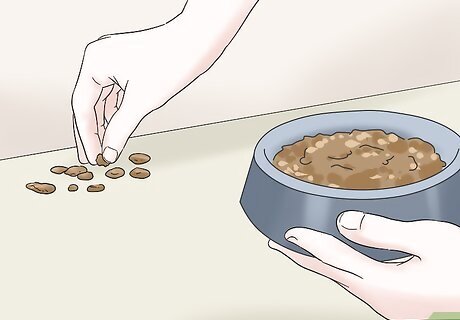
Remove food from the porch. Neighborhood cats be attracted to your porch by food left out for wildlife or your own pet. Other cats will grow accustomed to finding food here, and they may mark the area with urine. Remove the food so there is no longer a benefit to claiming your porch.
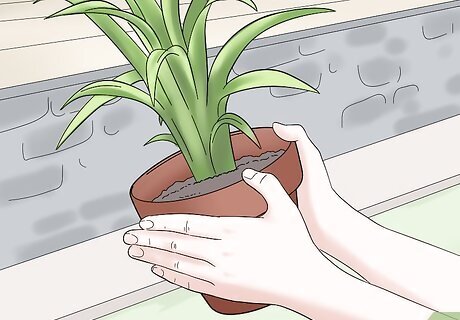
Remove potted plants from the porch. Some cats are attracted to certain substrates, such as soil. These can be tempting to use as a toilet. Remove any plant pots from the porch so that cats don’t have this option for where they urinate.
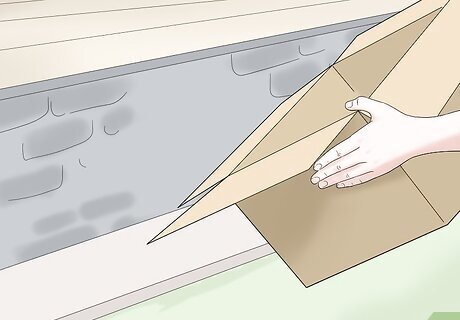
Remove cozy sleeping spots. Eliminate spaces that are cozy and inviting for cats to visit. These might include a chair with a cushion on it, or a objects such as boxes and crates that a cat could shelter in.
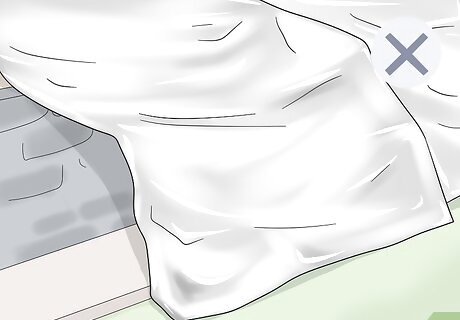
Don’t bother covering surfaces with tin foil or plastic. Some advice urges homeowners to put tin foil or plastic over areas they want to protect. Cats will likely continue spraying regardless, so these methods are generally unproductive. However, one advantage to covering surfaces with plastic or tin foil is the ease of cleaning up after a cat urinates on these surfaces.
Making Your Cat Feel Safe
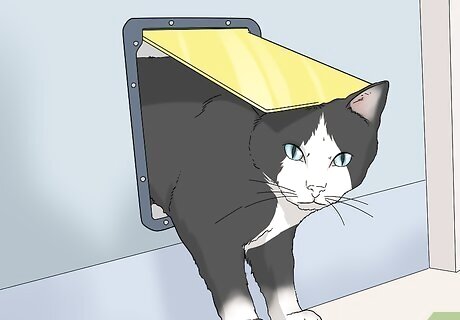
Secure cat flap doors. If the culprit is your own cat, it’s likely that he’s marking his territory. This happens when the cat feels challenged or insecure for some reason. Most commonly, he feels a threat to his territory. The key to stopping this behavior is to help him to feel more secure. If you have a cat flap or another means of another cat entering the house, it is crucial to make sure no strays can get inside your house. Lock the cat flap and let your cat in and out on demand. Use a microchip activated cat flap that is programmed to respond only to your cat's microchip.
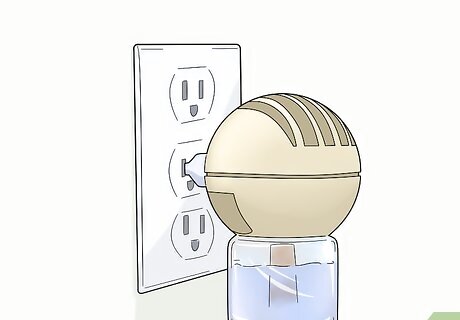
Use a feline pheromone diffuser. A diffuser gives off a synthetic version of the hormones released by a nursing mother cat that make the kittens feel safe and content. These are a handy way of reducing an individual's stress levels. Ask your vet for a feline pheromone diffuser such as Feliway to help decrease your cat's anxiety levels.
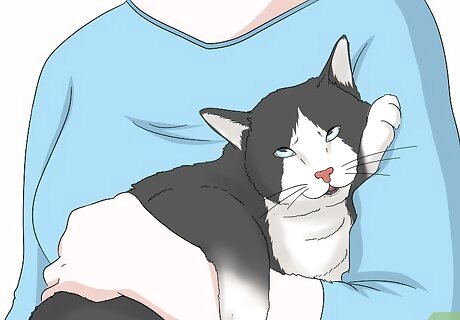
Give your cat plenty of attention. Make sure you play with it regularly. Try for 5-10 minute sessions, 3 times a day. A tired and content cat is less likely to be stressed about what's happening outside.

Keep your cat indoors. If neighborhood cats are making your cat act territorial, keep your cat indoors. Seeing neighborhood cats outside may cause stress. Consider blocking the view through the lower half of windows looking over the front yard, so your cat cannot sit and look at other cats. Keeping your cat indoors can also help you identify if your cat is the one urinating on the porch. If the smell fades when you keep your cat inside, your cat might be the culprit.
Getting Rid of the Smell
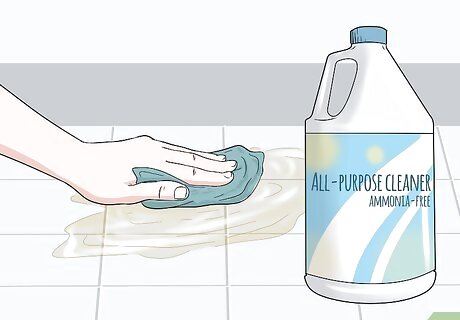
Do not use ammonia-based cleaners. The majority of household cleaners contain ammonia, which is also a constituent of urine. By cleaning away cat urine with a household cleaner, you are merely replacing that cat's scent with another urine-based smell. This actually increases the culprit's instinct to spray, because he feels his scent has been overwritten by another.
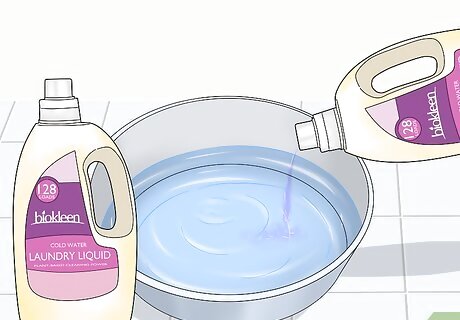
Make a deodorizing solution to get rid of the smell. To thoroughly deodorize urine smells without leaving a smell behind, create a deodorizing solution. Use enzymatic or biological laundry detergent (such as Seventh Generation or Biokleen) mixed with water. Mix 9 parts water with 1 part laundry detergent. Spray on the surface that you want to clean. Scrub with a brush or rag to wash the contaminated area. Choose a nontoxic detergent. Some surfaces such as carpet, soft furnishings, and painted walls may not be color fast. Test an inconspicuous spot before embarking on a major clean. If carpet or fabric has been sodden with urine over a period of time, it is impossible to get the smell out. In this case, throw the item away.
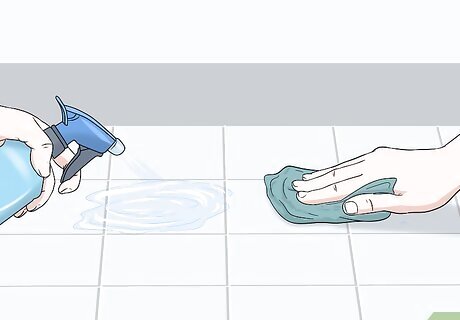
Rinse and dry the area. Using clean water, thoroughly rinse the area where you’ve applied the deodorizing solution. Dry thoroughly with a clean towel.
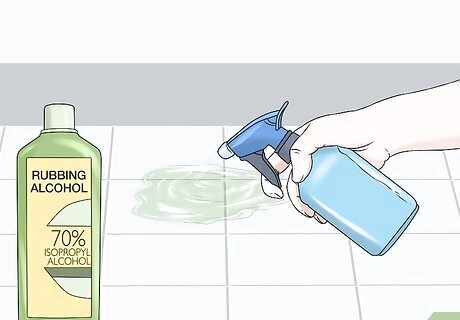
Spray the area with rubbing alcohol. Use a spray bottle to cover the most frequently used areas where the cat urinates. Work the rubbing alcohol into any cracks or crevices with a nail brush. Allow the area to air dry.

Do not use a strong smelling substance. Avoid the temptation to put a strong smelling substance on the porch to deter the cats. The cat will merely feel the need to refresh his scent marker and hence will return to the spot to urinate. Refrain from using essential oils such as eucalyptus or rosemary. Although it is popularly believed that cats don't like the smell of these oils, this approach can actually be counterproductive.




















Comments
0 comment